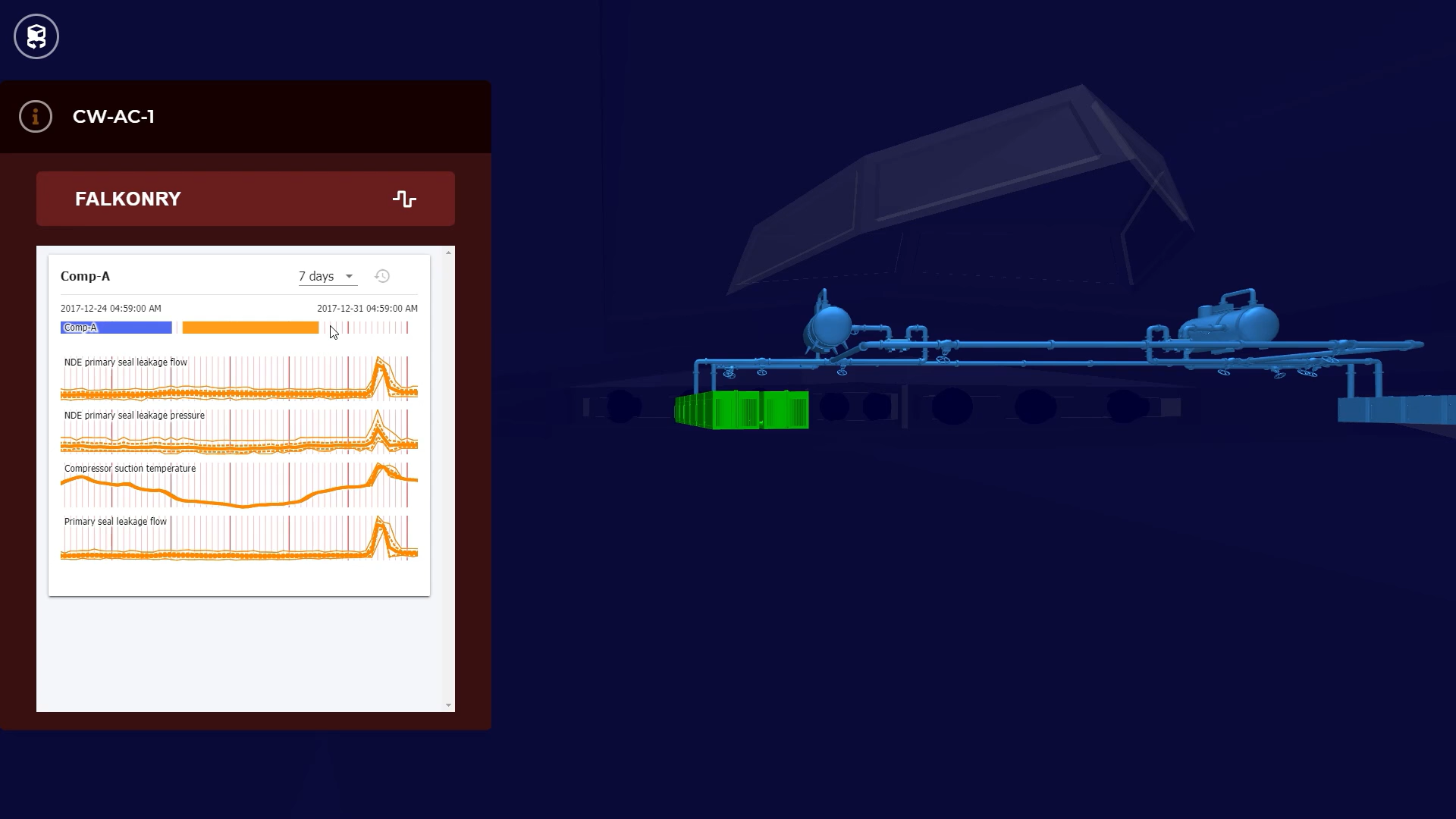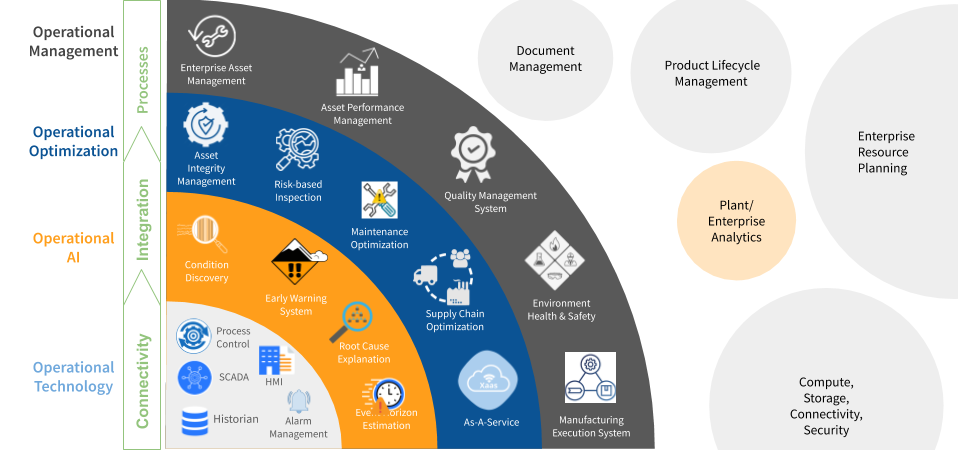Interview with Ian Hersey: DoD’s push for digitalization and CBM+
Key takeaways:
- Falkonry has been working with JWAC, to analyze electronic signals using our ML-based pattern discovery and recognition software in order to gain an advantage on the battlefield
- Conditions are patterns of behavior and Falkonry’s AI technology is all about finding important patterns in large volumes of multivariate time-series data

Q: What is a big trend in DoD acquisitions, especially for software?
Ian: An interesting trend I have seen is the number of projects around information infrastructure. For example, the Air Force issued an RFI for VAULT, which is about collecting and tagging information across domains as well as enabling computing infrastructure and application services to use that data. JAIC has issued one on helicopter maintenance and another on Data Readiness [for] Artificial Intelligence Development (DRAID). Both are aimed at better data collection and preparation so that it can be used in machine learning applications. There is also a strong push for enabling secure, standards-based cloud computing within the DoD via Platform One.
All of these projects point towards solving the basic problems that everyone faces when trying to implement the machine learning aspects of artificial intelligence. That is, getting and storing quality ground truth and sensor data, establishing the algorithmic tools required to make use of that massive amount of data and having easy access to the computing power required to run those algorithms.
Q: Why is the DoD so interested in enabling machine learning (ML)?
Ian: I think that the military sees the power ML brings to many areas that it has a stake in. JWAC, an agency Falkonry has been working with, has been analyzing ELINT using our ML-based pattern discovery and recognition software in order to gain an advantage on the battlefield. I see this as part of a larger trend towards trying to collect and use sensor data in a programmatic and more purposeful way. For example the Navy’s DDG 1000 program resulted in one of the most highly instrumented vessels in the US military. Why did they do this? Because they knew that information was key to improving the readiness and ultimately the performance of the equipment, both in the short term – finding and resolving operational problems – and in the long term – getting rich behavioral data back to the design engineers to improve the next generation of vessel or iteration of equipment design.
Take the Air Force’s F-35 sustainment program as another example. It is estimated that about ⅔ of the total program cost will be in sustainment – $1 trillion dollars over a 60-year service life. Recognizing the magnitude of this, the sustainment program was built around ALIS (Autonomic Logistics Information System), a system that was meant to realize cost and time savings through automated data collection, failure prediction and smarter logistics. Now ALIS had some … significant challenges … let’s say. But rather than abandon the approach, the F-35 Joint Program Office has opted to replace it with ODIN (Operational Data Integrated Network) – achieving the same goals with a modern architecture that is easier to scale and enhance over time.
What does that say? It says that the work doesn’t end at data collection – the data must be used in order to provide value. Machine learning, used in support of condition-based and predictive maintenance (CBM and PdM), is an obvious place to start because it has potentially out-sized lifetime effects and it has been shown in industrial settings to provide better uptime and fleet availability. In fact, extending beyond the F-35 program, the Assistant Secretary of Defense for Sustainment has a program called Condition Based Maintenance Plus (CBM+), which explicitly ties the need for CBM to the new technologies for improving the timing and delivery of service.
There are many other areas, like intelligence analysis and autonomous vehicles, where machine learning is also going to be important, but I think that CBM+ is a sort of “tip of the spear” that will help show the way to even more applications.
The work doesn’t end at data collection – the data must be used in order to provide value. Machine learning, used in support of condition-based and predictive maintenance (CBM and PdM), is an obvious place to start because it has potentially out-sized lifetime effects and it has been shown in industrial settings to provide better uptime and fleet availability.
– Ian Hersey on DoD adopting modern architecture that is easier to scale and enhance over time
Q: What does Falkonry, as a company and as a technology, bring to this?
Ian: Well, focusing on the area of condition-based maintenance, the key idea is that you need to find conditions on which you are triggering maintenance actions. Conditions are patterns of behavior and Falkonry’s time series AI technology is all about finding important patterns in large volumes of multivariate time-series data. I think what the military has seen is that just collecting the data isn’t enough. It’s really hard to go through that data and pull out the subtle behaviors and interactions that signify that something relevant has happened. Humans are good at this job, don’t get me wrong, but there are limits to what can be done and sustained. For example, in the Navy’s case, all of those new sensors on the DDG 1000 result in an overload of alarms to the point that watchstanders just can’t pick out the signal from the noise. Similarly, can a person process the data generated during an F-35 sortie between the time it lands and the time it taxis to a hangar in order to decide if it needs special maintenance on the turbofan blades? That’s the kind of rapid and pervasive condition monitoring that Falkonry’s time series AI technology does well but humans have a harder time with when unassisted.
As a company, Falkonry’s customer success and engineering teams have been working on pattern discovery, detection, classification and prediction problems across a wide range of applications – from defense, to steel, to energy and pharmaceuticals. Our innovations have been prompted directly from the needs of our customers. For example, our latest development in failure prediction: Event Horizon Estimation – a ‘Time To Anything’, if you like – was born from an insight in the steel industry, but is equally applicable to jet engines and energy generators. Or, another case, where a monitoring technique applied to a facility’s compressed air system was relevant for quality monitoring in pharmaceutical manufacturing. This ability to apply the same underlying technology to different applications helps in scaling and providing a faster time to value.
As a company, Falkonry’s customer success and engineering teams have been working on pattern discovery, detection, classification and prediction problems across a wide range of applications – from defense, to steel, to energy and pharmaceuticals.
Q: Where should someone go if they want to learn more?
Ian: The Falkonry website is a good place to start. The use cases page provides some good background on areas where Falkonry has been successfully applied. If you’re looking for a more general understanding of condition monitoring and the challenges of implementing a machine learning-driven reliability program, the blog section makes for an interesting read. The resources section includes a number of great panel discussions on similar topics, including insights from business leaders. You can also contact us and set up a 1-on-1 conversation.





